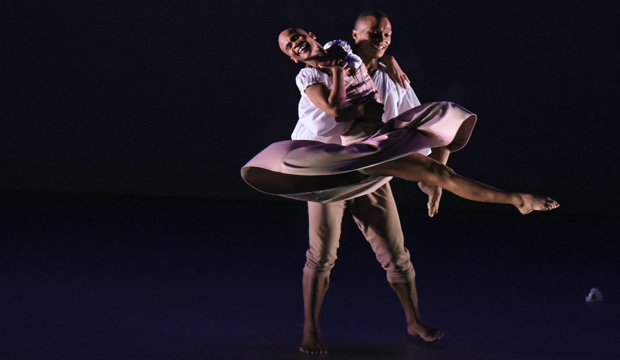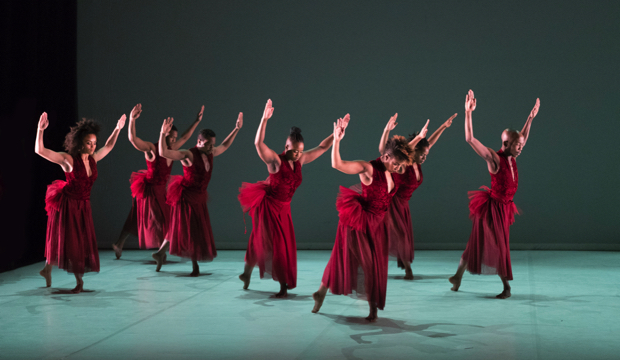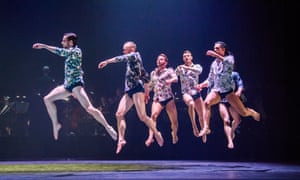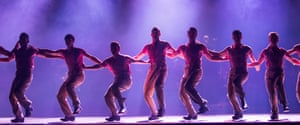Sadler’s Wells
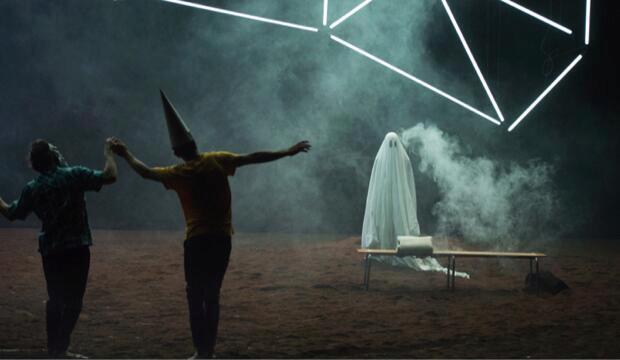
Billed as a hybrid theatre piece that bears witness to its creator, Christian Rizzo’s fascination with our living space, Une Maison (A House), which dates from 2019, had its UK premiere at Sadler’s Wells, and fits into the commitment of Dance Reflections by Van Cleef & Arpels to bring new and challenging French choreography to the UK.
It’s new, and it’s certainly challenging. I don’t mind admitting that I generally prefer to be able to follow what’s happening in stage, particularly when there appears to be a hint of a narrative, but in this case found it impossible to do so.
But we’re getting ahead of ourselves. Visually, Une Maison is dominated by an extraordinary, totally absorbing structure that hangs over the stage: a massive mobile made up of neon tubes organised in capricious shapes, that functions as architecture, scenography and light source of the piece. More: it’s its main attraction, its one genuinely interesting and original feature (set design by Yragaël Gervais).
Throughout the work’s one hour duration, this structure all but dances. A couple of times the light in the tubes throbs and fizzes in a frenzy of liquid movement; towards the end its stark white light mellows into orangey tones; and then some of its hanging branches slowly close, rather like a flower at dusk.
The other moment of visual interest comes towards the end of the piece, when one of the performers climbs onto a neat pile of earth upstage left and armed with a spade launches a vast cloud of red earth over the stage.
That is a true coup de theatre, the slow rising and then falling dust creating its own dance; but annoyingly, it’s repeated again and again in a self-indulgent sequence that sees performers come on with buckets of earth to add to the general dusty chaos.
It becomes a suffocating, rather oppressive overlong sequence, where as the dust spreads from the stage into the auditorium those of us with our Covid masks on suddenly felt grateful, rather than vaguely put upon, to be wearing them……
In between 13 performers meandered around the stage, sometimes coming together in groups of three or four for a short bout of jaunty dancing, sometimes just walking. At regular intervals two people would come together in an embrace, that could last long as a gesture of mutual reassurance, or break apart in refusal and aggression.
Une Maison is apparently meant as an exploration of humans in their living space, but we shall have to take Christian Rizzo’s word for it.
